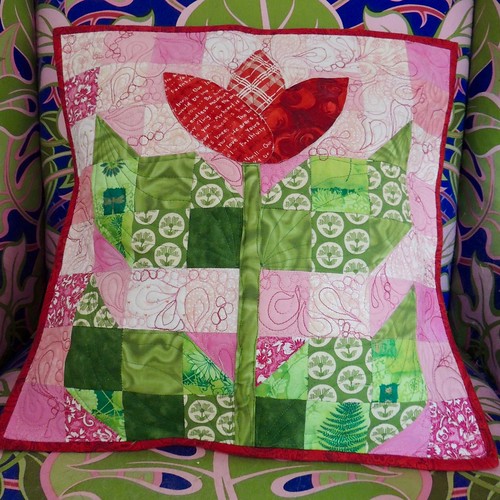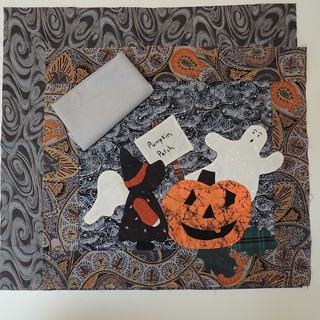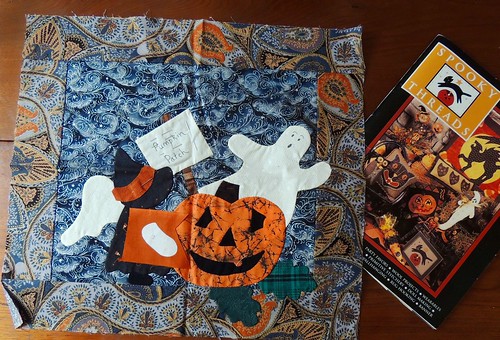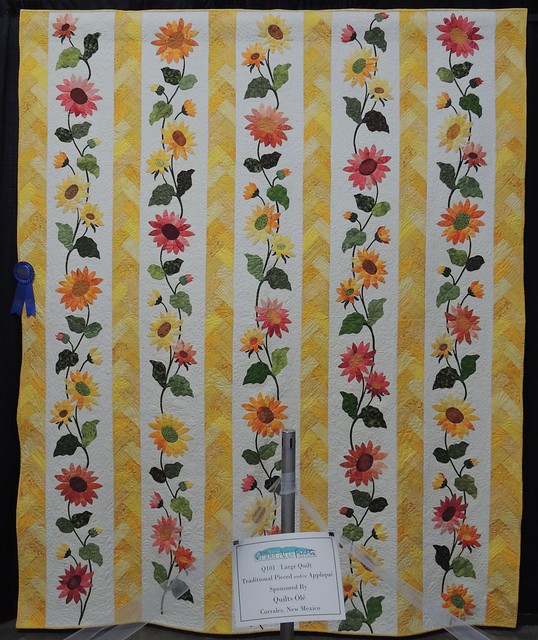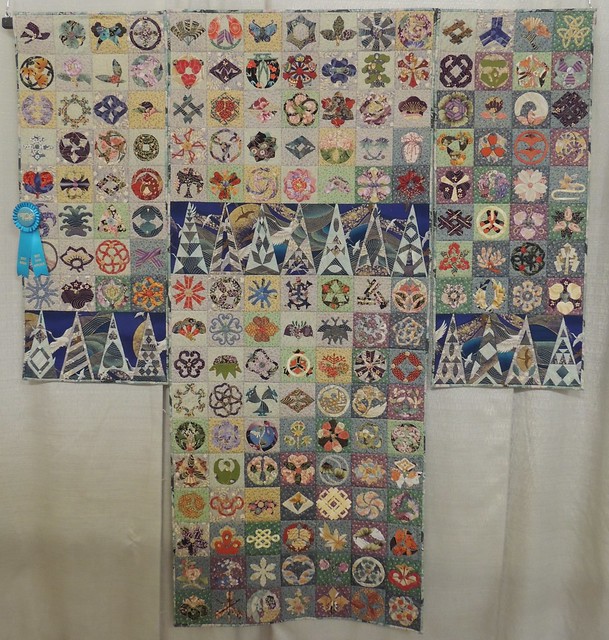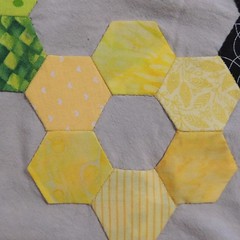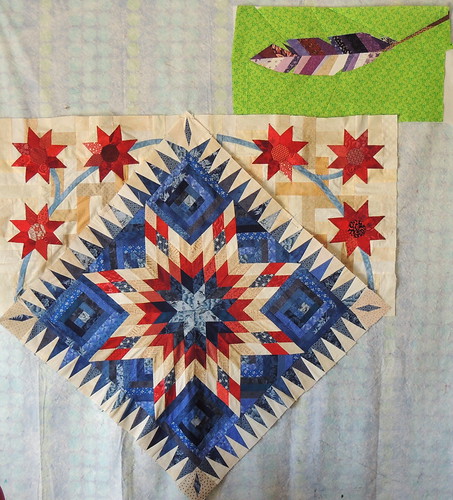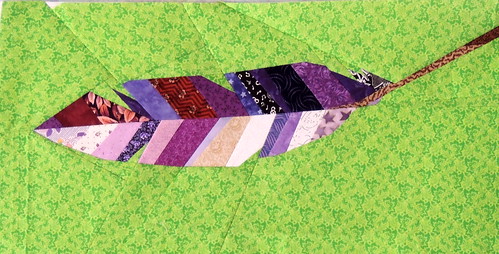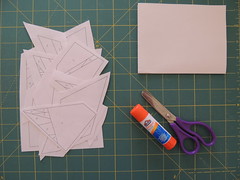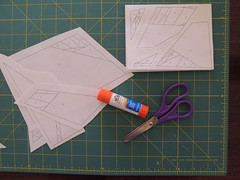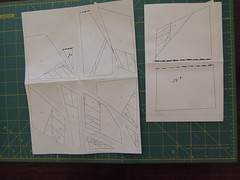These are the 4 pairs of blocks that I made for this month's Block Lotto.
The guidelines for these scrappy green blocks require at least 4 fabrics–2 green and 2 lights (background). In the photo, my blocks are least scrappy at the top and most scrappy at the bottom.
We are making them in mirror-image pairs.
If you are curious, you can find the details (and link and coupon for the block pattern) here:
Green Leaves of May
I am referring to them as LEAF block pairs, but, of course, you might make them in a non-leaf color and/or arrange them in a non-leafy geometric way.
Here are three possibilities, each made from 4 leaf blocks–for my graduated rainbow sampler, I haven't yet decided which arrangement of four blocks I will use.
The first two blocks–which I think of as an X and an O (or, at other times, a butterfly and an emerald) are made from 2 pairs of leaf blocks. The third arrangement, a scrappy sort of pinwheel, is made using four of the same block.
I couldn't resist playing with the idea of creating a blooming plant in a small way, so ... I made a pillow cover.
I love small projects like this 16-inch pillow because it's a great way to work on an idea in a small way, try a new technique, or practice/warm-up before you tackle something larger or perhaps dearer to you. In my case, it had been too long since I'd done any free-motion quilting and needed the practice/warm-up and also wanted to try mixing two motifs in a random way as a filler design.
I also played a little with the limits of combining a scrappy background (including some darker pinks) with the scrappy leaves without losing contrast between them.
The petals which form the flower are prepared used interfacing with fusible on one side only, fused in placed and then secured with quilting. The stem is a 3-D element that is inserted and, if desired, also held in place with quilting.
The pillow has a simple, unquilted, lapped back.
I included the directions for making the pillow as as a bonus in the block pattern for Green Leaf Pairs - Quilt Block Pattern.




